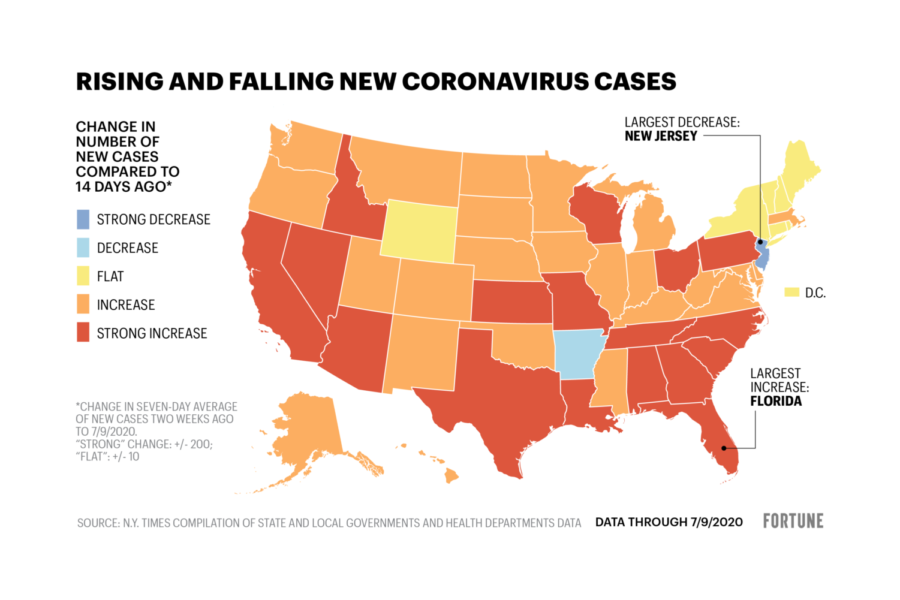Marking the One Year Anniversary of the COVID-19 Pandemic
March 19, 2021
On March 11, 2020, the World Health Organization declared the novel coronavirus a worldwide pandemic. The disease originated in China in late 2019, and moved with remarkable speed throughout the rest of the world, infecting over 120 million people and killing 2.67 million people. In the United States, about 30 million cases have been reported and over 536,000 Americans have died thus far. The disease has spread through every town, every city, every state and every country in the world, leaving millions of families reeling from the loss of their loved ones.
Not many people realized how dangerous the disease truly was when the first case was reported in the United States in early January 2020. Due to lack of preparedness, many countries, including the U.S., saw dramatic increases in the number of COVID cases from March to April. As governments began to understand how the virus spread, lockdowns and stay-at-home orders were put in place to ensure the safety of each person. On April 3, 2020, the Centers for Disease Control and Prevention (CDC) recommended wearing face masks along with maintaining social distancing protocols.
Health care workers were forced to treat COVID patients with inadequate supplies and limited resources. As cases began to rise rapidly in the United States, health care workers pleaded with both state governments and the federal government to give them the necessary supplies to help treat patients. However, governments were slow to hear the cries of these workers. Millions of people died worldwide in the first few months of the pandemic, some of whom could have been saved if health care workers were provided with the supplies necessary to fight this deadly disease.
In addition, COVID also destroyed the U.S. economy, which cut over 20 million jobs in the first month of the pandemic. The unemployment rate skyrocketed to 14.7 percent, a number not seen since the Great Depression. In April, about one month into the pandemic, the Latino unemployment rate increased to over 18 percent, while the African American unemployment reached 16.6 percent in May. But the U.S. economy has steadily been increasing over recent months by adding millions of jobs, which have helped the unemployment rate decrease to 6.3 percent.
Furthermore, the United States leads the world in both reported cases and deaths. Fortunately, even with all the suffering this country has gone through over the course of the past year, the United States may finally be reaching the light at the end of the tunnel. In mid-December, the vaccine developed by Pfizer-BioNTech was granted emergency use authorization by the Food and Drug Administration (FDA) and Sandra Lindsay, a nurse at Long Island Jewish Medical Center in New York, became the first person in the United States to receive the vaccine. A few weeks later, two more vaccines, one from Moderna and the other from Johnson & Johnson, were approved.
Thus has been the way of life for over one year. Hybrid learning has become the norm, and very few schools nationwide have been able to successfully transition to full in-person learning. Due to stay-at-home orders, large numbers of teenagers have experienced depression and anxiety.
Even though COVID-19 has been one of the darkest moments in American history, students at Saint Patrick High School are looking at the positives and the life lessons they have learned throughout the past year. “I’ve learned that life should not be taken for granted in the moment,” said senior Scot Zabielski. “You never know when something will be taken from you.”


